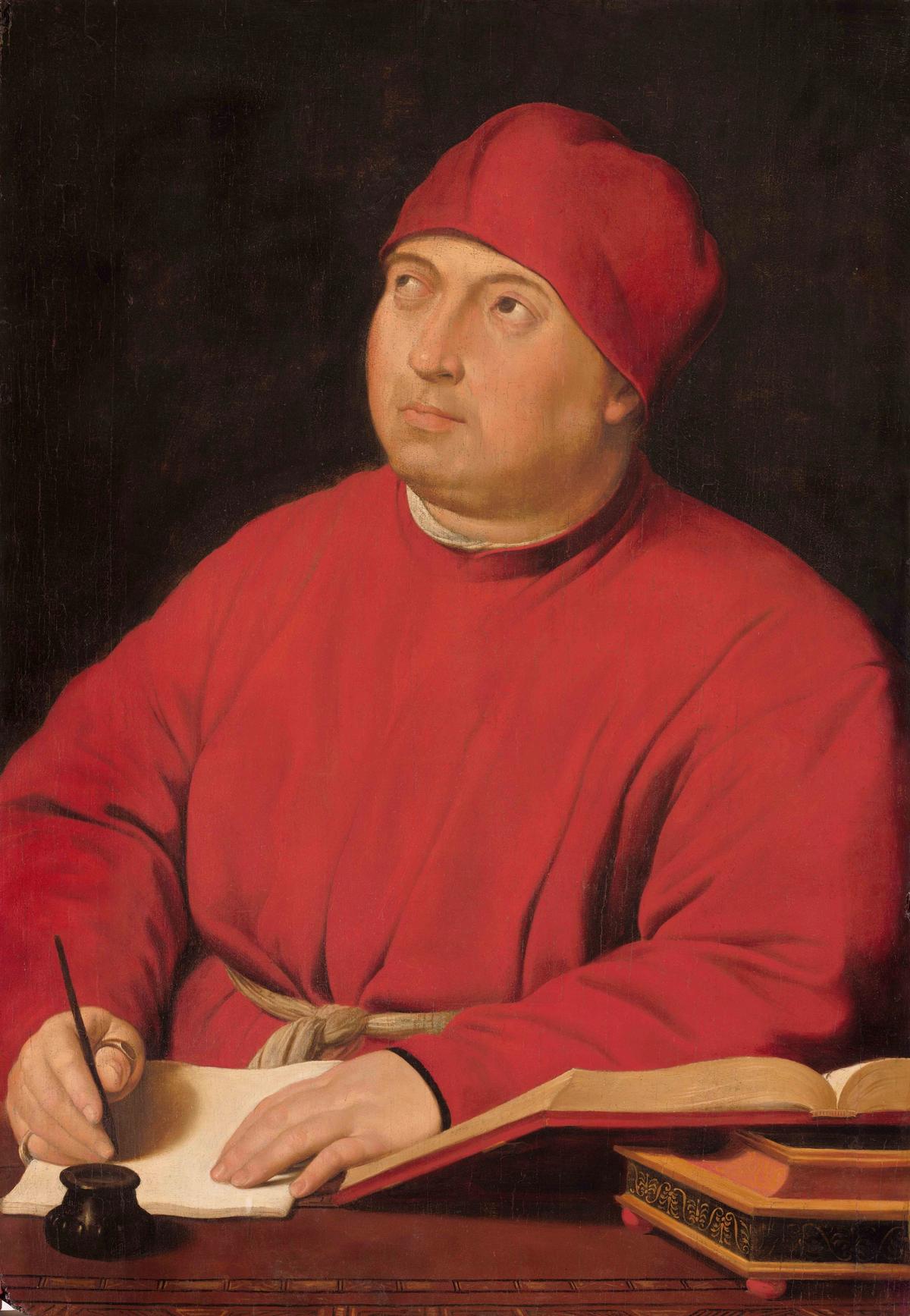This short book has been written to accompany an exhibition at the Isabella Stewart Gardner Museum (until 30 January 2020) on the occasion of the occasion of the 500th anniversary year of Raphael’s death. It has two aims, first to tell the story of Mrs Gardner’s acquisition of Raphael’s Portrait of Tommaso Inghirami (around 1510), the first work by the artist to come to the US, and second, in a detailed chapter by Ingrid Rowland, to tell Inghirami’s life story. Briefly, Inghirami (1470-1516) was the protégé of his uncle who was a secretary to Pope Sixtus IV, thus providing him with an entrée to the Roman intellectual elite. As a schoolboy he starred as the heroine in Seneca’s Phaedra which earned him the life-long nickname, “Fedra”. He was admired by all the literati of his day and, after his ordination in 1493, entered the papal service where he made his name as an orator and preacher and became a friend and correspondent of Erasmus, among other polyhistors. In 1510 he became a papal librarian, but died unexpectedly of injuries sustained when he was run over by an oxcart. It is assumed that he met Raphael while the artist was working on the frescoes of the papal apartments in 1508 or 1509 (Inghirami appears in the School of Athens). His portrait may have been commissioned on the occasion of his translation from a canonry of the Lateran to the more prestigious post in the Vatican. Nathaniel Silver relates how Mrs Gardner was determined to acquire a Raphael for her collection with the help, almost needless to say, of Bernard Berenson. In this case, Gardner cleverly beat the shady Berenson at his own game by corresponding directly with the owner, the Florentine dealer, Emilio Costantini, forcing Berenson, her middleman, to sell it to her for £7,000, a vast drop from the £15,000 price he initially quoted. Silver also explains the reasons for accepting the Raphael attribution for the Gardner portrait (the other is in the Pitti), while pointing out that without further documentation, only comparative scientific and technical analyses will help to answer the question.
- Nathaniel Silver and Ingrid Rowland, Raphael and the Pope’s Librarian, Paul Holberton Publishing, 64pp, £16, €18, $20 (pb)


